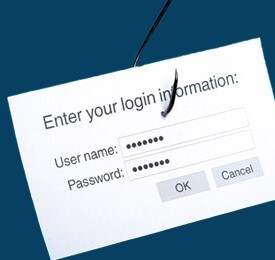
Have you read the latest headline about password stealing malware? Ovidiy Stealer is a form of credential-stealing software complete with marketing and Russian technical support for only $7. Cybercrime is big business and you know you don’t want to be a target.
What are you supposed to do? Maybe you heard a security expert say you should have a long complex password with strange symbols. Or that you read you should have a unique password for every website/application you log into. Maybe a Youtube video or trainer showed you little tricks to create memorable verses to remember all these passwords. Or even a progressive technologist recommends a password management tool. In truth, this guidance is similar to the many ways financial advisors give advice on retirement planning. You can approach the same basic challenge many different ways, but at the end of the day having a single or limited number of passwords for multiple different websites is big trouble for you. The reason is criminals don’t typically directly attack a secure site like Amazon or a bank, instead they either trick you into typing in your password via Phishing or compromise a small company. From there they take that same username (most likely your email address) and password and try that on hundreds of different sites from email providers to financial sites to make money.
That is unless you either have a unique password for every website/application or you have what is called Multifactor Authentication. Security experts typically explain Multifactor or 2 Factor as something you know and something you have. In most cases, its implemented as a text message or app on your mobile phone. The way it protects you is every time you (or the bad guys) log into a website it will prompt you for a code from your text message or application. Only the person in possession of your mobile phone can proceed. So, when your password is compromised the criminal will try to log into every popular website, but instead of successfully getting in you’ll start to get text or mobile notifications alerting you to this breach. You’ll be able to change your passwords quickly and avoid financial losses and embarrassing Viagra sales pitches from your email account.
Do you want to be safe? Do you want to avoid being a target? If you haven’t enabled Multifactor, what you need to do right now is search, “How to enable multifactor authentication for [Fill in the website]”. You need to do this immediately for your webmail, social media accounts and banking accounts. You’ll find it’s as simple as logging into your account, going to settings, then security and enabling multifactor. This five-minute activity could save you thousands of dollars and/or major embarrassment.
Have a question for our experts? Leave your comment below and check out our website for more information.






